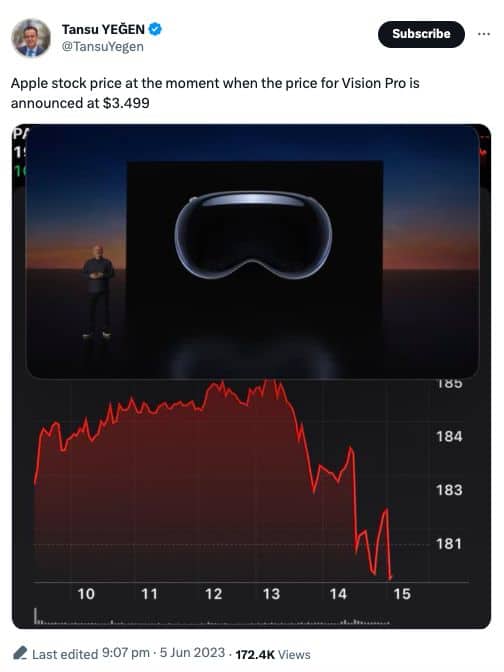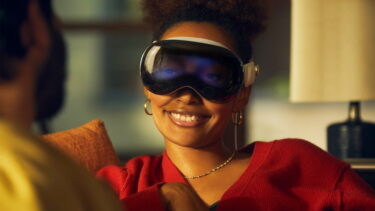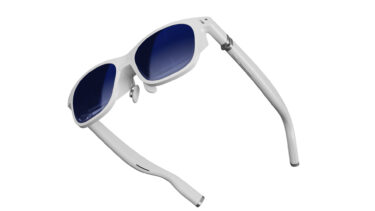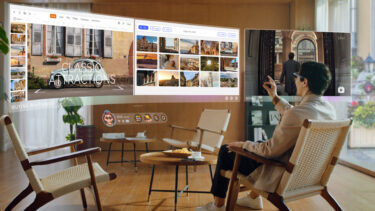The last time Apple announced its first product was in 2015 when the company launched Apple Watch. On June 5, 2023, the tech giant finally revealed its newest creation – the AR headset Vision Pro, on which the company has been working for almost a decade.
The device has so far reached a lot of interest and curiosity, with its impressive features and capabilities. The AR headset Vision Pro is designed to provide an immersive experience and is equipped with sensors and cameras that track the user’s movements and surroundings, creating a seamless augmented reality experience.
“It’s the first Apple product you look through, not at,” Apple’s CEO Tim Cook spoke about the headset. “This marks the beginning of a journey.”
How Does Vision Pro Stand Out From the Other Headsets?
Perhaps the biggest standout feature is that Vision Pro is designed to be mainly an AR device, but it has the ability to transition between augmented and complete virtual reality. Only Microsoft HoloLens 2 have such capability at the moment.
Vision Pro can be controlled with eyes, hands, and voice, and it doesn’t require a controller. It uses a new system, visionOS, where users can select apps by looking at them, tapping, flicking, or using voice commands. It supports Bluetooth accessories and can connect to a Mac. Downward-facing cameras capture hand movements. Apple Vision Pro can be used all-day when plugged in and for up to two hours of use with its external battery.
Apple assures that the headset won’t isolate users from the real world. It displays your eyes using EyeSight and creates a digital persona by scanning your face. In full VR, a glowing screen indicates unavailability. The pass-through video allows to see the real world and project 3D objects into it.
Virtual reality is often associated with bad-quality visuals and unrealistic human avatars. However, Apple promises that the display will have unparalleled clarity and can support 4K video. Vision Pro’s innovative design includes an ultra-high-resolution display system with 23 million pixels across two displays, which ensures that every experience feels immediate and lifelike. Also, instead of going along with metaverse avatars, Apple introduced “personas,” realistic digital representations of users wearing Vision Pro.

Perhaps the biggest downside is the headset’s high price. The device costs $3,499, which is unaffordable for many, and it’s the most expensive of all headsets in the market, along with Microsoft HoloLens 2. Last year, Meta received a lot of criticism after releasing its most expensive headset, Quest Pro, with a $1,499 price tag.
Vision Pro is entering a market that has yet to fully take off: virtual and augmented reality devices still seem far from mainstream adoption. Its main competition is likely to come from Meta, which has had some success with its gaming-oriented Quest 2 headset, but received a more mixed response to its all-purpose Quest Pro.
Vision Pro’s Impact on the VR/AR Industry and the Metaverse: A Game-Changer?
Apple claims that the Vision Pro headset is the world’s most advanced consumer electronics device and the first step towards spatial computing. Moreover, visionOS, which is built on macOS, iOS, and iPadOS foundation, “is the world’s first spatial operating system that blends digital content with the physical world.”
The Sandbox, one of the most popular decentralized metaverses, said that “Apple’s Vision Pro headset is a game changer for creativity and social connections in the metaverse.”
“With virtual Avatars seamlessly bridging digital and physical realms, interactions can extend beyond channels like the metaverse, social media and gaming platforms. Apple’s innovative move paves the way for immersive experiences that bring us closer to the metaverse, opening up new possibilities for creators,” The Sandbox wrote on Twitter.
According to Sterling Crispin, a neuro-technologist at Apple, Vision Pro “is a culmination of the whole industry into a single product.” However, he added that “it’s going to take until the end of this decade for the industry to fully catch up to the grand vision for this tech.”
The Problem With the Word “Metaverse”
To many, metaverse and virtual or augmented reality go hand in hand. The metaverse is often seen as a fully immersive virtual world where users can interact with each other and their environment in real time. Virtual and augmented reality technologies are key components in bringing this vision to life, allowing users to experience the metaverse in a more realistic and engaging way. Many also associate “metaverse” with Meta’s virtual reality projects, which have faced challenges and backlash from users and employees over privacy concerns.
In its product description and advertisements for Vision Pro, Apple does not even once mention the word “metaverse.” Moreover, the device is also officially called an AR headset, even though it has VR features.

“One thing that Apple did very right: frame the Apple Vision Pro as an AR headset, not a VR headset. The focus is on the leap in spatial computing, not in building out a virtual world, which has unfortunately dominated the conventional definition of “the metaverse,”” said dannygreene, brand lead at Yuga Labs, which is building the Web3 metaverse Otherside.
According to Andrey Manolov, director of development product integration at Sensorium Galaxy, the term “metaverse” is still very broad and lacks precise boundaries. At this stage, anyone can describe their own vision — and claim this is what metaverse is all about.
“Yesterday, during the unveiling of the Vision Pro, Apple presented its perspective on the next generation of devices for interacting with the digital realm. Their vision is truly impressive,” Manolov told Metaverse Post. “All aspects of humanity’s digital interactions are moving from flat-panel displays (smartphones, tablets and traditional laptops, and computers) to 3D: communicating with three-dimensional avatars of family and friends instead of regular video calls, working on a varied number of virtual screens instead of physical monitors, and then of course entertainment.”
He added that if we define the metaverse as a digital platform for engaging with 3D worlds, then should Apple Vision Pro turn out to be a popular product and find its audience, it will also accelerate the metaverse’s widespread adoption.
Apple Stock Fell After the Headset’s Launch
Apple’s stock price rose by as much as 2.2% in the morning and early afternoon trading on June 5, reaching a high of $184.95, which was higher than its previous all-time high of $182.94 achieved in January 2022. However, the excitement was short-lived as Apple shares fell about 3% in later afternoon trading, closing below $180, a 0.8% loss for the day. The drop occurred immediately after Apple CEO announced the headset’s price, which is slightly higher than the $3,000 price tag most experts predicted for the device prior to its reveal at Apple’s Worldwide Developers Conference.

Read more:
Source: mPost






